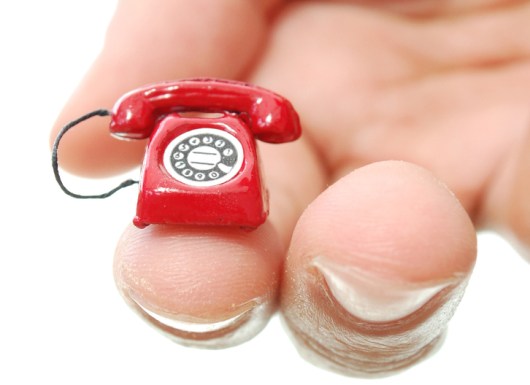These TEDTalks explore the saying, “Good things come in small packages.” A world with lifesaving microchips, the perfectly engineered foot, and vast worlds constructed on pinheads seem fantastical, but the following speakers have turned their ingenious ideas into fascinating realities.
[ted id=836]
Frederick Balagadde: Bio-lab on a microchip
The sub-Saharan African region has suffered the most losses from the HIV/AIDS epidemic, Ugandan-born research scientist Frederick Balagadde says. As someone who has lost many loved ones to this disease, Balagadde was inspired to create an iPhone-sized microchip that will offer diagnoses to 100 patients, up to 50 times faster, and five to 500 times cheaper than the cost of Western medicine.
Willard Wigan: Hold your breath for micro-sculpture
Feeling defeated by traditional education at a young age, Willard Wigan discovered his inherent talent to make intricate, microscopic sculptures after observing ants in his backyard. After his mother saw the mini-apartments he made from splintered wood, she encouraged him to go even smaller in design. Thus was made a mini Statue of Liberty placed in the loop of a threading needle, intricate home architecture on pinheads, and rearing white stallions attached to golden chariots by spider web threading.
[ted id=320]
Kwabena Boahen on a computer that works like the brain
Did you know the amount of energy the brain and your laptop uses is essentially the same? Kwabena Boahen and his team collaborated with neurobiologists to “create a computer that works like a brain.” Together, they reverse engineered the way the optic nerve sends information to the brain, and have recreated this retina network in a silicon chip.
[ted id=509]
Bonnie Bassler on how bacteria “talk”
Molecular biologist Bonnie Bassler says there are 10 trillion times as many bacterial cells as any other cell in or around the human body. By studying a bacteria with a bioluminescent property, vibrio fischeri, her lab came to find that all bacteria has a system by which they “talk” to each other with chemical words, interpret those words, and turn on a group behavior only successful when all cells participate in unison.
[ted id=195]
Robert Full on animal movement
From humans to tiny invertebrates, biologist Robert Full observes the way animals travel in order to engineer the perfect foot. These observational experiments included cutting off a tiny leg segment on a cockroach to prove it moves with the same efficiency as with all its legs, and watching a shrimp-like creature called a stomatopod propel its entire body forward in a rolling motion –exemplifying what Full says is “the ultimate distributed foot.”
[ted id=821]
Jonathan Drori: Every pollen grain has a story
Jonathan Drori uses microscopes to explore pollen in all its invisible beauty. His images reveal that pollen comes in a variety of surprising colors and shapes, and that from all of this unique visual data we can extract information about how these miniscule flecks travel, reproduce and grow into flowers.
[youtube http://www.youtube.com/watch?v=yQP4UJhNn0I?feature=player_embedded&w=640&h=360%5D
.
Just how small is an atom?
The atom is really really really small — smaller than we can imagine or visualize. This lesson from TED-Ed plays with our conceptions of size and space, resizing everyday objects like blueberries and grapefruits, to help us truly understand how tiny atoms are.
[youtube http://www.youtube.com/watch?v=n3TO1QEa-hk&w=640&h=390%5D
.
Gary Greenberg: The extraordinary nature of ordinary things
Dr. Gary Greenberg takes us into the micro world of of ordinary things — bees, sand, and even atoms — using microscopes to capture high-definition images. In this talk from TEDxMaui, Greenberg shows us breathtaking photos to remind us of the extraordinariness of everything around us.

Comments (2)